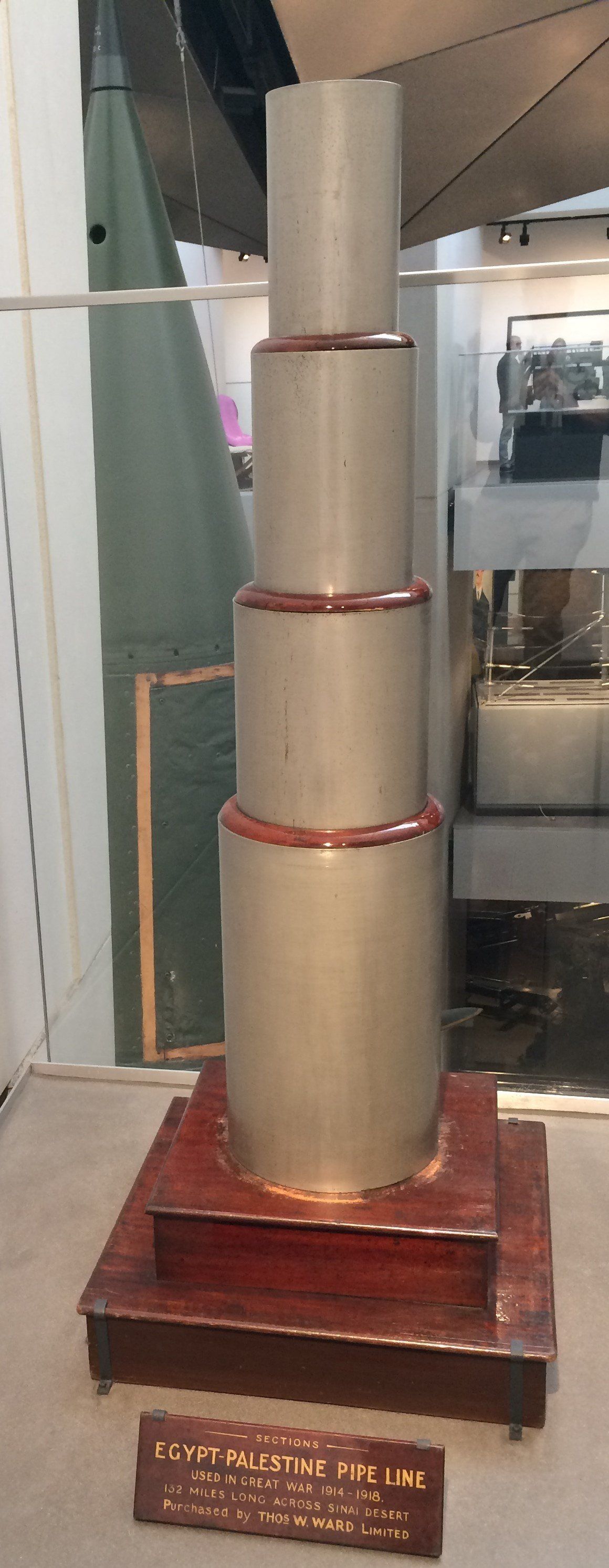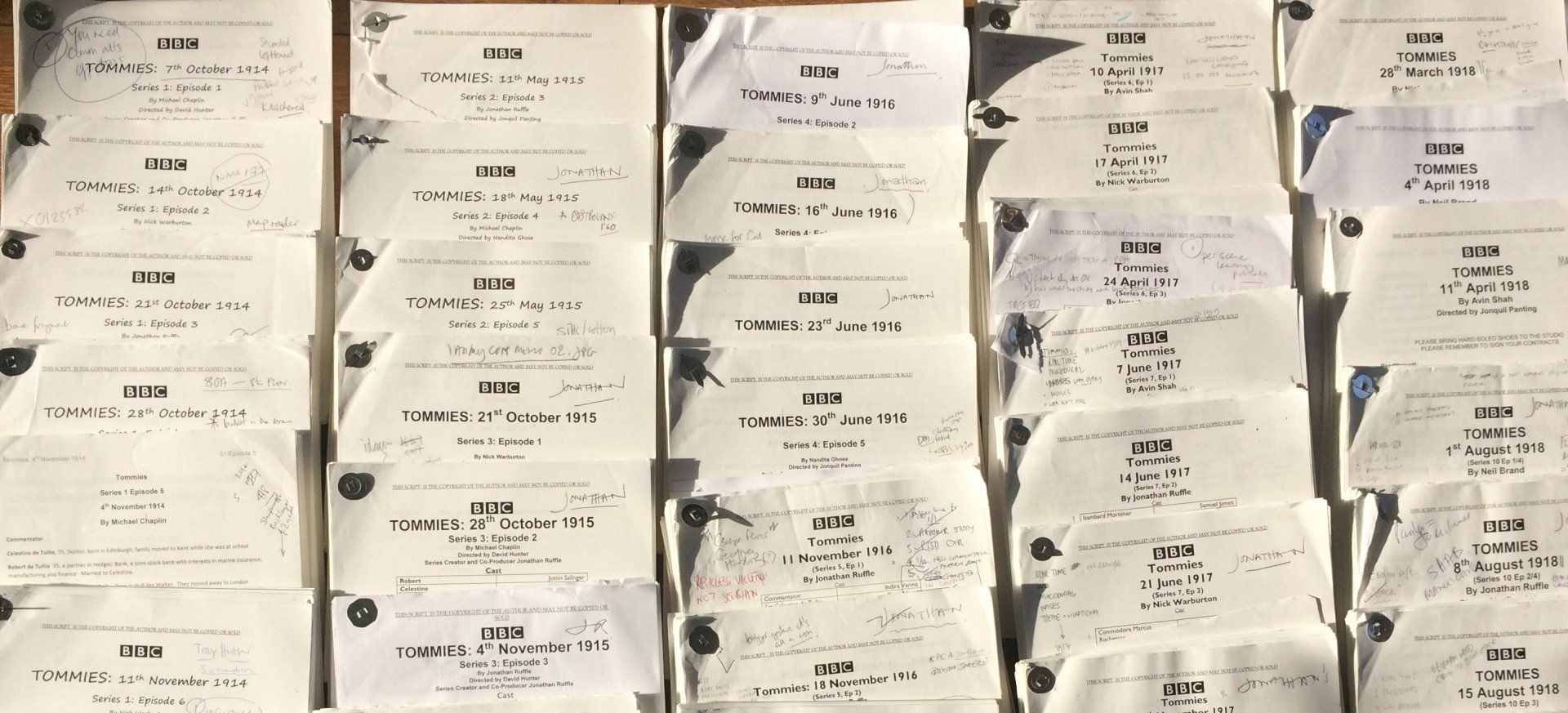Suicidal Mickey? Part One
10th November 1917
10th November 1917
10th November 1917
I thought at first I might go at the history a bit differently on this page because the story is split over two days and I'd prefer the first not to spoil the second. But now they've both been broadcast it seemed too complicated a way to do it.
This page is a bit more fractured than normal - apologies - as a result. I've gone at it character by character.
Beginning with Mickey, then, I wanted him to float between GHQ duties and the Arab Bureau, and unless I've misunderstood things, a signals officer with intelligence experience would have been very useful to them. Today he's out at Arak-el-Menshiyya trying to interpret Turkish troop movements, a spot I selected from a really good set of daily maps in a "Brief Guide to the Campaign" by Allenby, or Allenby's staff, here at archive.org.
This was a tricky time for the Allies (see John Ferris's "The British Army and Signals Intelligence") because although they could decode the enemy's information stream as fast as the Turks could, the Turks could no longer be relied to act rationally on it. It's the classic Intel Fork: you know what he should do with it - but he's off doing whatever he wants.
Right from the first scene Mickey appears in, Gaza buffs will have identified that Mickey is putting together the elements required to pull off a Haversack Ruse. I focussed on Arthur Neate's effort which was detailed in 'The Spectator', 23rd March 1956. It seemed that Neate had been lost to history rather, and I thought he deserved his moment in the sun.
It wasn't difficult to find the WD for El Girheir on 12th September 1917 (I have the ref and I can't find it at this moment, sorry) and you can see the haversack operation go out as Neate's diary suggested it did, but of course Neate himself isn't mentioned.
How to choose a camel came from the Private Papers of A S Benbow in the IWM.
The Hong Kong and Singapore Mountain Battery, their screw guns and Bing Boys nickname all came from their original war diary at the TNA plus numerous mentions across the official histories. The Singapore mutiny we mention (also giving context to pan-Islamic themes elsewhere) really happened and one of these days I'd like to do more work on it.
The material about the Egyptian Labour Corps came mainly from Lieutenant EK Venables's memoirs in the IWM. It was he who had the flogging story and all the shouts and complaints that went with it.
As an example of a micro-detail that would worry me, and I don't tend to put on these pages for fear of them disappearing in a heap of references, is the presence of the ELC up near Arak-el-Menshiyya on this day. After all, Venables is wonderful material, but his ELC unit were down in the Sudan. But history is a remarkable thing. It seems to want to help. Thinking I couldn't have the story because the ELC would never be close enough to the line to make it possible, their War Diary contradicted me and showed that they were. I mention this because I do this for even the tiniest movement or place on any given day. I would prefer to reject story gold if it is even tinged with unlikelihood. For example, I even worked out the walking pace in Cairo so Zarbab and Jack could actually make it to the Pyramids and back. Is this worth it? In some fundamental way, a sort of look-after-the-pennies-and-the-pounds-will-look-after-themselves way, I think it is. (Mind you, the rest of the TOMMIES team could cheerfully kill me sometimes.)
It's a thrill, I won't deny it, to work on this story in the archives and keep coming across Lawrence of Arabia. I used the memoranda he wrote to the Arab Bureau for this episode and tomorrow's, which he probably used himself to jog his memory when he wrote 'Seven Pillars of Wisdom'. His wet and miserable time, plus the incident hiding behind the bush, is straight out of those.
When Mansoor voices the notion that a deception plan cannot depend on a single haversack or a single guerrilla leader, I was relying heavily on "British Military Intelligence in the Palestine Campaign 1914-1918" by Yigal Sheffy. I'm not saying that is Sheffy's conclusion, but it was certainly the one I drew from his extraordinarily detailed book about all the different intelligence methods used. He appealed to my sense of the disappearing worker-ants of war when inevitably history only has time and appetite for a few characters. Not that they don't contribute massively, and that's the paradox that interests me.
I borrowed the idea of Mickey upping the stakes of the Haversack Ruse by deliberately dying from Operation Mincemeat, The Man Who Never Was in WW2. And his cunning use of a distinctive word such as 'Heshe' from code-breaking since it began. Burning down the forest was actually proposed as an Arab Bureau scheme at some point.
I found the SANE research on suicide especially helpful, many thanks to all the brave volunteers who spoke to them about their own suicide attempts. Also Combat Stress.
When Mansoor voices the notion that a deception plan cannot depend on a single haversack or a single guerrilla leader, I was relying heavily on "British Military Intelligence in the Palestine Campaign 1914-1918" by Yigal Sheffy. I'm not saying that is Sheffy's conclusion, but it was certainly the one I drew from his extraordinarily detailed book about all the different intelligence methods used. He appealed to my sense of the disappearing worker-ants of war when inevitably history only has time and appetite for a few characters. Not that they don't contribute massively, and that's the paradox that interests me.
I borrowed the idea of Mickey upping the stakes of the Haversack Ruse by deliberately dying from Operation Mincemeat, The Man Who Never Was in WW2. And his cunning use of a distinctive word such as 'Heshe' from code-breaking since it began. Burning down the forest was actually proposed as an Arab Bureau scheme at some point.
I found the SANE research on suicide especially helpful, many thanks to all the brave volunteers who spoke to them about their own suicide attempts. Also Combat Stress.
If you are looking to get a good picture of Third Gaza Stuart Hadaway's "From Gaza to Jerusalem" is the best first stop, and he was also very helpful to me on the phone. I also recommend Neil Faulkner's "Lawrence of Arabia's War", James Barr's "Setting the Desert on Fire", Eugene Rogan's "Fall of the Ottoman Empire", Anthony Bruce's "The Last Crusade" and David Woodward's "Forgotten Soldiers".
Zarbab escaped from the Turkish POW camp in exactly the same way Trumpeter Inwood did (see the Families in British India Society article by Rosemary Reardon). The intelligence debrief he had when he came over the British front line in what we would now call Iraq was fascinating, especially as some Sirmoor sappers came over at the same time.
Zarbab's allegiance to pan-Islamic revolt has firm roots in history, and the dates insisted on working for us, even to the point where I could be happy that news of the Balfour declaration and the Russian Revolution were in the Egyptian papers by this date. The British Army signals aerial, effectively for the whole of Africa, really was tethered at one end to the Great Pyramid in Cairo. And the Citadel, now housing the Egyptian Army Museum - oh the irony - sits above the city.
Jack Bliss brought us the soldier's eye view of the campaign (as well as a million father/son conflicts). We were never going to get Jack into the Army legally, because he is still under age. I didn't want to suggest that the Army was still showing the blind eye as they had earlier in the war. But I thought it reasonable that he could turn up in the UK having 'lost' every identifying document on his way from India and would therefore be snapped up by a 52nd Division recruiting office. We reasoned that he'd find out who was in Egypt - half way to his beloved India, and sign up with them.
The map-making blunder that killed so many KOSB and Royal Scots Fusiliers in 155th Brigade on 8th November 1917 was of course true but never attributed to anyone so I attributed it to Mickey.
I got the idea of a ghost-written memoir for Celestine from Flora Sandes getting her autobiography out in 1916. She would have been treated at Cairo General Hospital when she was evacuated from Salonika.
Huda Hosseini was based on many women in "Women in the 1919 Egyptian Revolution: From Feminist Awakening to Nationalist Political Activism" by Nabila Ramdani. Just as we suggested with Huda's character the independence movement was kept alive in Egypt by the wives of the imprisoned, who then also took roles in the post-war movement itself.
Once this idea suggested itself I had to get an overview, which was from a book with now a somewhat discredited author, although not on issues that I thought would affect the historical bits of this book, "Egypt: In search of Political Community" by Nadav Safran.
Police chief Ibrahim was based on considerably more horrible individuals you can read about in the IWM library in Owen Sirrs's "History of Egyptian Intelligence", Ronald Seth's book "Russell Pasha" and Foreign Office notes at the TNA which also noted executions and deportations of political detainees.
Agatha is based on the Arab Bureau's policy of employing women in WW1 which you can find in their papers and was also one of the many leads I got from James Barr's "Setting the Desert on Fire".
My apologies. I have thousands of TNA and IWM documents which never got used, and I just wish I had the time to write up for you. It'd be a book - another book - and I'm cracking on with the next lot!
Just quickly - some photos taken at the IWM recently of the handiwork of the ELC - including an actual piece of pipe. I mean to say.
Related Episodes
Related Episodes



